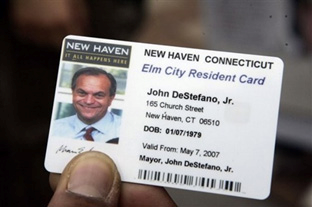Building Communities of Opportunity by Reducing Barriers to Housing
Parks. Transit. Quality schools. Safe streets. When people imagine the core infrastructure of a healthy community, these are the elements that likely come to mind. Rarely is housing part of the picture. Yet, safe, affordable housing—near good schools, parks, transit, and healthy food options—ensures that individuals can access jobs, obtain the education and training necessary to earn a living, and lead a healthy lifestyle. Increasingly, however, low-income people of color across the state are being priced out of their neighborhoods, relegated to substandard housing, and pushed into areas that lack quality community infrastructure. To ensure that all Californians have an opportunity to reach their full potential, the state must take more aggressive steps to ensure that it’s vulnerable populations have adequate housing.
California’s Housing Affordability Crisis Is Driving Displacement
California is facing an escalating housing crisis. Driven in part by enormous wealth created by the tech industry, corporate investment in local and regional housing markets, and supply constraints, housing costs have soared. At the same time, real wages have been stagnant or declined. These twin challenges – rising rents and inadequate wages – have left the state’s low-income residents and residents of color struggling to meet their housing costs. More than eight in 10 low-income households cannot afford their rent (i.e., they pay more than 30 percent of their income in rent), and close to 60 percent of Black and Latino renters have unaffordable housing costs, versus just less than half of their White counterparts. Moreover, skyrocketing costs are spreading throughout the state, particularly in the coastal regions, leaving families with limited housing choices. In the Bay Area, for example, two minimum-wage workers can find affordable rent in just 5 percent of the region’s neighborhoods.
The lack of affordable housing options, combined with other factors like inadequate protections for tenants, are driving people out of communities. More than six of every 10 households living across 13 counties in Northern California are now at risk of displacement, according to the University of California–Berkeley’s Urban Displacement Project. In the Bay Area, cities like Oakland are underdoing extreme gentrification.
Displacement comes with costs – longer commutes, poorer educational outcomes for children, high stress levels for families, and the loss of access to important community infrastructure. In fact, when low-income households leave their homes, they often move to lower-income, under-resourced neighborhoods. A recent study of households displaced from communities in San Mateo found that those families moved to areas with fewer health-care facilities, less jobs, and poorer air quality, substantially reducing their quality of life.
The State Must Do More to Protect Vulnerable Populations
After years of failing to address the housing crisis, in 2017 California took action to increase the supply of affordable housing. The state established a permanent source of funding for affordable housing through a new real estate transaction fee expected to generate $250 million annually and placed a $4 billion housing bond on the November 2018 ballot.
While a good first step, these efforts, alone, are not sufficient to address the housing crisis. It may take years for projects funded by the real estate transaction fee and affordable housing bond to be built. And even if such projects could be brought on line immediately, more funding is required to meet the state’s affordable housing need. Meanwhile, rents continue to rise and growing numbers of residents are being displaced from their communities.
The need for additional action is especially urgent given recent changes to federal housing policy. In January, the Trump Administration effectively suspended the implementation of the Affirmatively Furthering Fair Housing Rule, and enacted corporate tax cuts that are expected to reduce funding for affordable housing and, in turn, decrease the number of new affordable units built in California by 48,000 over the next decade. Perhaps most callously, Representative Dennis Ross recently unveiled legislation that would raise rental costs for low-wage workers receiving federal rental assistance, by $500 per month for some.
What more should California do to ensure that all Californians have access to quality housing?
- Strengthen tenant protections. There are a range of reforms the state could enact to enhance protections for tenants, including repealing the Costa-Hawkins Rental Housing Act, which would allow local jurisdictions to establish stronger rent control policies, and strengthening eviction protections for renters. Fortunately, several tenant protection policies will likely be voted on by the electorate and California Legislature this year, such as the Affordable Housing Act of 2018 (repeals Costa-Hawkins), AB 2343 (provides tenants with more notice before eviction proceedings can be initiated and additional time to respond to eviction complaints), AB 2925 (statewide just cause eviction), and AB 2364 (Ellis Act reforms). Policymakers and voters should support these important measures.
- Prevent discrimination against especially vulnerable populations. Some populations face unique barriers to accessing safe, affordable housing. For example, individuals with criminal records and Housing Choice Voucher holders are routinely discriminated against by housing providers. Immigrant families, sometimes faced with the threat of deportation of family members, are also subject to mistreatment by landlords. The state should address barriers faced by these populations, by passing legislation that prevents a landlord from discriminating against voucher holders, restricting landlords’ use of criminal records in the evaluation of housing applications, and providing additional protections for immigrant families.
- Support the rehabilitation of California’s aging housing stock. Due to the lack of affordable housing options, low-income Californians are often forced into substandard, aging, unhealthy housing. Unhealthy conditions found in hazardous housing can lead to cancer, lead poisoning, and mold-related conditions likes asthma, resulting in missed school days and poor school performance for children, as well as missed work days for parents. The state should work to improve the condition of existing housing for low-income Californians by providing more resources for rehabilitation, strengthening local jurisdictions’ capacity to enforce their housing codes, and passing innovative policies like proactive inspections.
- Facilitate the construction and preservation of affordable housing. California needs 1.5 million additional units to satisfy the demand for affordable housing. To meet the need, the state should work to preserve existing affordable housing, support community land trusts and other tools that facilitate community control of housing, and significantly increase the state’s investment in the creation of new affordable units. Several policy proposals pending this year would provide additional funding for affordable housing, including the Veterans and Affordable Housing Bond Act of 2018, which would provide $3 billion in funding for affordable housing, and SB 912 (Beall), which would provide another $1 billion for affordable housing. In addition, legislators have requested a state budget allocation of $2.5 billion to support affordable housing and homelessness programs.
Resources
- When Discretion Means Denial: A National Perspective on Criminal Records Barriers to Federally Subsidized Housing (Marie Claire Tran-Leung, February 2015)
- Inclusionary Housing Database (Grounded Solutions Network)
- Strengthening Communities through Rent Control and Just Cause Evictions: Case Studies from Berkeley, Santa Monica, and Richmond (Leslie Gordon, January 2018)
- Protect Tenants, Prevent Homelessness (National Law Center on Homelessness and Poverty, 2018)
- California’s Housing Emergency: State Leaders Must Invest Immediately in Affordable Homes (California Housing Partnership Corporation, March 2018)


